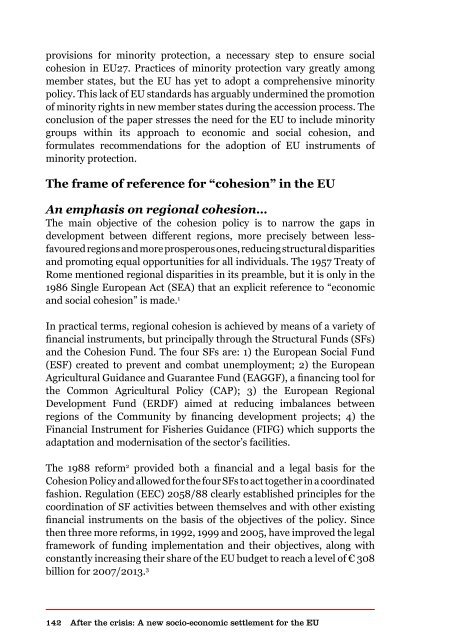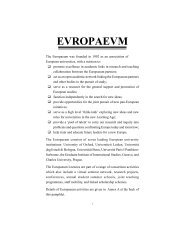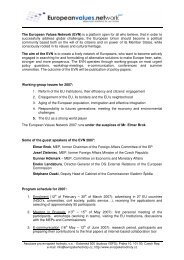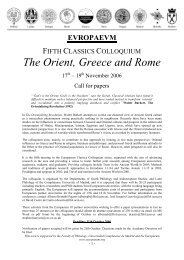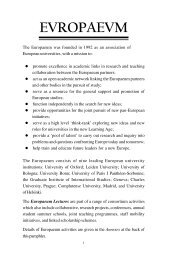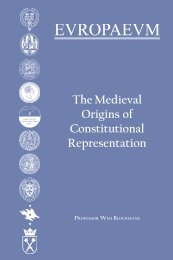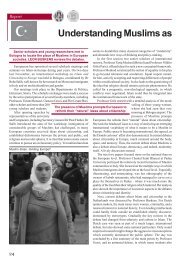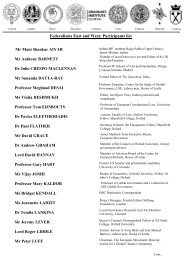Authors Iain Begg | Gabriel Glöckler | Anke Hassel ... - The Europaeum
Authors Iain Begg | Gabriel Glöckler | Anke Hassel ... - The Europaeum
Authors Iain Begg | Gabriel Glöckler | Anke Hassel ... - The Europaeum
Create successful ePaper yourself
Turn your PDF publications into a flip-book with our unique Google optimized e-Paper software.
provisions for minority protection, a necessary step to ensure social<br />
cohesion in EU27. Practices of minority protection vary greatly among<br />
member states, but the EU has yet to adopt a comprehensive minority<br />
policy. This lack of EU standards has arguably undermined the promotion<br />
of minority rights in new member states during the accession process. <strong>The</strong><br />
conclusion of the paper stresses the need for the EU to include minority<br />
groups within its approach to economic and social cohesion, and<br />
formulates recommendations for the adoption of EU instruments of<br />
minority protection.<br />
<strong>The</strong> frame of reference for “cohesion” in the EU<br />
An emphasis on regional cohesion…<br />
<strong>The</strong> main objective of the cohesion policy is to narrow the gaps in<br />
development between different regions, more precisely between lessfavoured<br />
regions and more prosperous ones, reducing structural disparities<br />
and promoting equal opportunities for all individuals. <strong>The</strong> 1957 Treaty of<br />
Rome mentioned regional disparities in its preamble, but it is only in the<br />
1986 Single European Act (SEA) that an explicit reference to “economic<br />
and social cohesion” is made. 1<br />
In practical terms, regional cohesion is achieved by means of a variety of<br />
financial instruments, but principally through the Structural Funds (SFs)<br />
and the Cohesion Fund. <strong>The</strong> four SFs are: 1) the European Social Fund<br />
(ESF) created to prevent and combat unemployment; 2) the European<br />
Agricultural Guidance and Guarantee Fund (EAGGF), a financing tool for<br />
the Common Agricultural Policy (CAP); 3) the European Regional<br />
Development Fund (ERDF) aimed at reducing imbalances between<br />
regions of the Community by financing development projects; 4) the<br />
Financial Instrument for Fisheries Guidance (FIFG) which supports the<br />
adaptation and modernisation of the sector’s facilities.<br />
<strong>The</strong> 1988 reform 2 provided both a financial and a legal basis for the<br />
Cohesion Policy and allowed for the four SFs to act together in a coordinated<br />
fashion. Regulation (EEC) 2058/88 clearly established principles for the<br />
coordination of SF activities between themselves and with other existing<br />
financial instruments on the basis of the objectives of the policy. Since<br />
then three more reforms, in 1992, 1999 and 2005, have improved the legal<br />
framework of funding implementation and their objectives, along with<br />
constantly increasing their share of the EU budget to reach a level of € 308<br />
billion for 2007/2013. 3<br />
142<br />
After the crisis: A new socio-economic settlement for the EU


